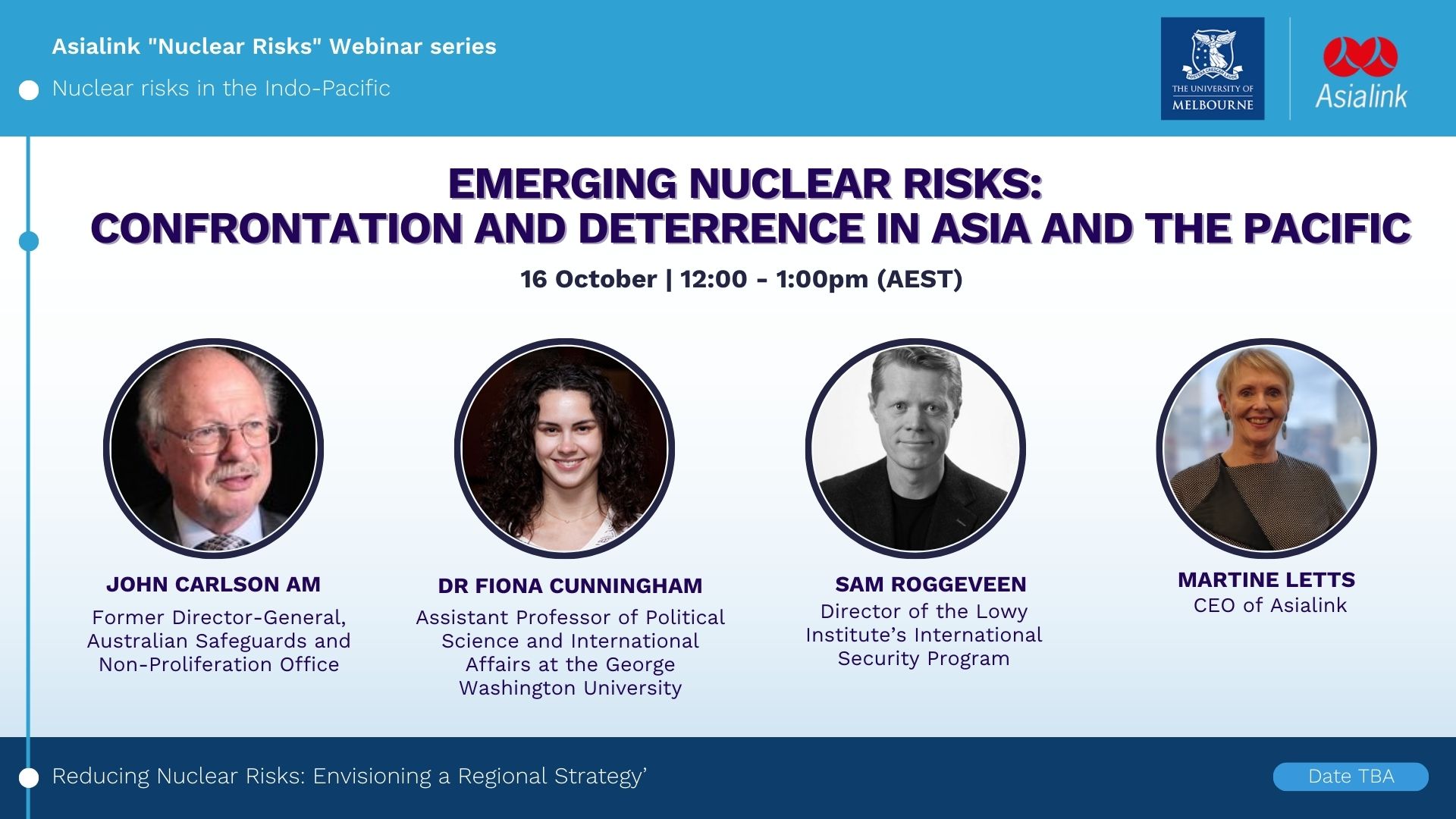The Nimble New Minilaterals
FOREIGN POLICY
APLN member C. Raja Mohan points out that across Asia and the Indo-Pacific region, national interests, threat perceptions, and desires for alignment remain too diverse for a binding commitment in the model of NATO. Read the original article here.
Small coalitions are a smart alternative to cumbersome multilateralism and formal alliances.
As the old multilateral institutions, from the United Nations to the World Trade Organization, become increasingly paralyzed and dysfunctional, minilateral organizations have emerged as another format for getting things done. Small groups of countries are focusing on specific issues and shared interests—often voluntarily, rarely as a formal bloc—as a pragmatic alternative to cumbersome multilateralism and constricting alliances. The concept goes back a long way: Think of the 19th-century Concert of Europe or the Five Eyes intelligence-sharing arrangement born during World War II.
But it’s Asia and the Indo-Pacific that have become minilateralism’s 21st-century testing ground. Geopolitical shifts are fast reshaping the region and pushing it toward a new balance of power. At the same time, the region has little tradition of—or, for now, interest in—formal military alliances beyond a handful of countries’ bilateral pacts with the United States. Their national interests, threat perceptions, and desires for alignment remain too diverse for a binding commitment in the model of NATO, the European Union, or other blocs.
Asia’s minilaterals are largely a response to China’s rise and challenge to the regional balance of power. The Quadrilateral Security Dialogue (known as the Quad and made up of Australia, India, Japan, and the United States) and the Australia-United Kingdom-United States pact (known as AUKUS) are the most prominent examples. India, Israel, the United Arab Emirates, and the United States established the I2U2 cooperative format in 2021, and the latest addition is the emerging trilateral partnership among Japan, South Korea, and the United States. Since preventing Chinese hegemony over Asia is the most important consideration driving these groupings, it is no surprise that many of them are sponsored or supported by Washington.
Given widespread unease in the region’s capitals to Cold War-style alliances, Asia’s new minilaterals are part of a new effort to transcend the traditional alliance framework. In light of Beijing’s rapid military buildup and Washington’s difficulties projecting power at such a great distance from its shores, the Biden administration sees minilaterals as a critical instrument to boost Asia’s ability to stand up to bullying by Beijing. In a region where the reluctance to join formal alliances remains entrenched, minilateral coalitions offer a pragmatic mechanism to cope with Chinese power.
In the past, castigation by China was enough to draw a potential minilateral grouping to a halt. In September 2007, Australia, India, Japan, Singapore, and the United States held a large naval exercise in the Bay of Bengal. China quickly denounced it as heralding an “Asian NATO,” and shortly afterward, the idea of institutionalizing such exercises was put to sleep. When the Quad had its tenuous beginnings that year, all four members were still loath to antagonize Beijing. Since then, China’s push for hegemony in the region has produced the inevitable backlash, and the Quad has become a major feature of each member’s foreign and security policy.
Postcolonial Asia was allergic to alliances. Asia’s newly sovereign nations were unwilling to subordinate their own independent foreign policies to the discipline of Cold War alliances—with a few exceptions, including Australia, Japan, New Zealand, South Korea, and the Philippines, which had a unique relationship with the United States or were part of the tightly knit Anglosphere. Washington’s attempts to build regional military alliances in the NATO model—the Southeast Asia Treaty Organization and, in the Middle East, the Central Treaty Organization—failed to take off. At the same time, the region never developed much faith in the U.N. system, thanks to its failures in stemming conflict in Kashmir, on the Korean Peninsula, and in the Middle East.
While the United States settled for a handful of bilateral alliances, minilaterals soon become an attractive option in parts of the region. Britain, formerly the dominant colonial power in Asia, set up a minilateral in 1971—the Five Power Defence Arrangements—with Commonwealth members Australia, Malaysia, New Zealand, and Singapore. The Association of Southeast Asian Nations (ASEAN) also began as a minilateral; its five founding members came together amid shared interests in countering communist insurgencies at home. But ASEAN reached its limits no sooner than China began to assert territorial claims against its neighbors. Despite ASEAN’s claim for centrality in the regional order, the bloc has struggled to support members against Beijing’s encroachments in the South China Sea and seems to lack the political will to collectively cope with the China challenge.
Four lessons can be derived from the unfolding story of Asian minilaterals that suggest they have staying power—and could be useful in other regions with similarly weak multilateral and alliance structures.
First, minilaterals are networks, not blocs, making it possible to rethink regional geographies. Asia and the Indo-Pacific comprise a vast region without the compact political and geographic blocs that have long defined, say, Europe. Minilaterals allow India to be connected to the networks of U.S. alliances and partnerships in East Asia (via the Quad) and the Middle East (via the I2U2). The United States has also nudged Britain to return to the Indo-Pacific, not just in taking a general interest in engaging with the security politics of the region but in building nuclear-powered submarines for Australia under the AUKUS banner. Britain, Italy, and Japan have joined hands to build a new generation of fighter aircraft; Australia, France, and India have had trilateral consultations on regional security; and France is also engaged with India and the UAE to strengthen its role in the Indian Ocean.
Second, Washington is using minilaterals to transcend the traditional framework of bilateral alliances. The hub-and-spoke model in Asia is no longer capable of dealing with the scale and scope of the Chinese challenge. The overlapping networks of minilaterals provide a valuable complement to the U.S. policy of rebooting its bilateral alliances. Besides the Quad and AUKUS, other groups have emerged as well: Australia, India, and Japan have their own trilateral format; the Australia-Japan-United States grouping is emerging as a powerful factor in East Asian security; India and its Southeast Asian neighbors patrol the vital sea lanes in and around the Strait of Malacca; and Bangladesh, India, and Japan are coordinating to accelerate regional integration in the eastern subcontinent.
Third, the minilateral format of strategic cooperation is particularly attractive for states with a history of nonalignment, such as India, which carefully guards its strategic sovereignty but is ready to work with the United States to pursue its security interests. Even as it raised the pressure on India following Chinese President Xi Jinping’s accession to power in 2012, Beijing was confident that New Delhi would not join hands with Washington because of New Delhi’s long tradition of nonalignment. China gambled wrong: The Quad framework has allowed India to engage with the United States and its Asian allies on security without giving up its foreign-policy independence. Indeed, the Quad has become the main instrument of India’s undisguised effort to balance China. What’s more, the U.S. strategy of boosting its partners’ capabilities has led to a bounty for India through Western help in the modernization of its defense industrial base and technological capabilities.
Fourth, the looser, non-ideological minilateral format makes it clear that India and other participants aren’t locked into a U.S.-directed system but rather retain full agency in defining the future of the group. As a result, China’s attempts to play the Asian regional identity card are falling flat, and its narrative that Washington is an outside power manipulating the region to build an Asian NATO has not resonated as one might have expected. The purposeful vigor of Asian minilateralism seems to have surprised Beijing, which initially dismissed the Quad as “sea foam” without substance and staying power.
These features of minilaterals make them particularly suited for Asia and other postcolonial regions weary of formal alignments with the United States. India, one of the original ideologues of nonalignment and a former champion of “Asian unity,” today recognizes the need for outside powers to balance the rise of a regional hegemon. Even many of the countries staying out of the minilaterals for now are realistic enough to know that a stronger U.S. presence and the widening ambit of bilateral and minilateral arrangements with the United States improve their own bargaining power with China. So, we should expect more countries, particularly in Southeast Asia, to engage with the Quad and other minilaterals. For all the incessant talk about China’s unstoppable domination and U.S. decline, the new minilaterals are helping to put the United States right back into the driver’s seat in Asian geopolitics.
In less than three years, the Biden administration has made minilaterals an integral part of the Asian order. On the security front, these minilaterals have begun to complicate Beijing’s security calculus by enhancing the deterrent capabilities of its neighbors. On the economic front, the minilaterals are restructuring the China-centered Asian integration that has emerged in the 21st century. By encouraging the shift of industrial supply chains out of China and building new technology coalitions—including the Quad and the “Chip 4” semiconductor alliance (made up of Japan, South Korea, Taiwan, and the United States), the Biden administration is challenging Beijing’s economic domination.
In Asia, the rise of an overly ambitious regional hegemon, the new political will of a distant superpower to counter it, and the presence of large and capable regional powers have created propitious conditions for minilateralism. But minilaterals are becoming part of the institutional landscape in other regions as well. In Europe, the heart of both alliances and multilateralism, smaller coalitions are emerging to press forward on issues where other partners are still applying the brakes. In defense, for example, the Lublin Triangle (Lithuania, Poland, and Ukraine) and the Nordic Defence Cooperation (among the five Nordic countries) are pushing the envelope of strategic and military integration. The countries of the Eastern Mediterranean and the Persian Gulf are increasingly cooperating, as is the emerging triad of Azerbaijan, Pakistan, and Turkey. Each is a response to the failure of old-style multilateralism and traditional alliances to resolve conflict and promote integration, making it likely that the minilateral format is here to stay.
This article appears in the Fall 2023 issue of Foreign Policy.
Image: Alex Nabaum/Illustration for Foreign Policy




